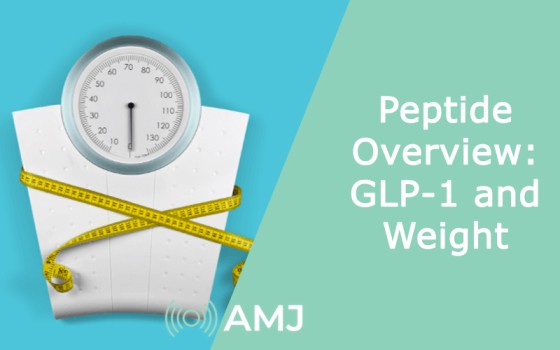Glucagon-like peptide-1, or GLP-1 for short, is a hormone the digestive tract makes on its own. Studies suggest that, particularly after caloric consumption, it may be essential for maintaining normal blood sugar (glucose) levels. Since GLP-1 is an incretin hormone, it has been hypothesized to aid in lowering blood sugar by increasing glucose absorption by cells for energy and stimulating insulin release from the pancreas in response to elevated blood sugar levels.
GLP-1’s potential in diabetes research has brought great interest from the greater scientific community. Two primary mechanisms include GLP-1 in the management of diabetes:
Natural GLP-1: When consuming food, the organism releases GLP-1. It has been theorized to decrease hunger hormone signaling and thereby increase fullness, and slow the stomach’s emptying process. Additionally, it appears to function mostly when blood sugar levels are high s it might promote insulin release in a glucose-dependent way.
GLP-1 Receptor Agonists: GLP-1 receptor agonists are synthetic substances created as adjuvants in the context of diabetes research. These substances have been speculated to stimulate pancreatic beta cells to secrete more insulin by acting similarly to natural GLP-1. Additionally, they are assumed to aid in lowering blood sugar levels by inhibiting glucagon secretion. Further data suggests that GLP-1 receptor agonists may aid weight reduction through their potential to decrease hunger hormone signaling and delay stomach emptying.
GLP-1 Peptide: Mechanism of Action
Glucagon-like peptide-1 (GLP-1) has been hypothesized to work by triggering a cascade of physiological reactions that increase fullness and aid in controlling blood sugar levels.
An expanded description of GLP-1’s potential function is as follows:
When certain types of food, such as carbohydrates and fats, are consumed, specialized cells in the small intestine (known as L-cells) release the hormone gliptin.
The release of GLP-1 into the circulation in response to a meal has been speculated to be linked to GLP-1 receptors on the surface of pancreatic beta cells, potentially stimulating insulin release. Here are the reactions that are hypothesized to be set off by this binding:
- Insulin secretion may be enhanced because GLP-1 might prompt beta cells to secrete more insulin into the circulation. A decrease in blood sugar levels is caused by insulin, which aids cells in absorbing glucose from the blood.
- The secretion of the hormone glucagon from the alpha cells of the pancreas is proposed to be inhibited by GLP-1. By stimulating the liver to produce glucose, glucagon usually elevates blood sugar levels. Reduced blood sugar levels result from GLP-1’s action on glucagon release inhibition.
- Findings imply that GLP-1 may reduce the pace at which the small intestine receives food from the stomach. Slowing glucose absorption from the digestive system, this delay in gastric emptying helps moderate the increase in blood sugar levels after a meal.
GLP-1 has been hinted to influence the regulation of hunger. Investigations purport it may aid in weight by limiting food intake by communicating with the brain to transmit sensations of fullness and satiety. The hypothesized protective actions of GLP-1 on pancreatic beta cells might aid in the long-term maintenance of their function.
As part of its regular process for regulating blood sugar, GLP-1 in typically created in reaction to food consumption. Scientists theorize a more precise and powerful regulation of blood sugar levels may now be possible with the development of synthetic GLP-1 receptor agonist substances that imitate the actions of natural GLP-1. These peptide-based compounds are widely used to research type 2 diabetes in animal test models. They are assumed to assist research models with diabetes in better regulating weight and blood sugar levels by amplifying the effects of GLP-1.
GLP-1 Peptide and Weight
The hypothalamus is a brain area involved in hunger regulation, and GLP-1 may affect this central nervous system region. Investigations purport that a meal triggers the hypothalamus to produce GLP-1, activating GLP-1 receptors. Feelings of fullness (satiety) and decreased appetite are considered to result from this activation.
Gastric emptying, or the process of the stomach releasing its contents, is assumed to be slowed down by GLP-1, which may cause gastric emptying to be delayed. A longer duration of fullness is produced when food remains in the stomach for longer, which occurs when the stomach empties more slowly.
Findings imply that thermogenesis, the mechanism by which the body produces heat and burns calories, may be enhanced by GLP-1. This is achieved by potentially enhancing the metabolic rate of brown adipose tissue (BAT), a specific kind of fat that stores energy as heat. An increase may aid weight reduction in energy expenditure brought about by BAT activation.
Studies suggest that GLP-1 may have the potential to impact the brain’s reward system, which in turn might impact the perception of food flavor.
Research suggests that GLP-1 may indirectly affect hunger and cravings by helping to manage blood sugar levels. When blood sugar levels are steady, cravings for calorie-heavy meals are less likely to strike.
It has been hypothesized that GLP-1 may further modify hunger and food intake by interacting with other gastrointestinal tract hormones, including ghrelin and peptide YY.
Although GLP-1 may induce weight reduction, its exact impact may differ from organism to organism. Diet, level of physical activity, and individual biology are some of the elements that may impact GLP-1’s potential to promote weight reduction, and not every organism will lose the same amount.
Substances that operate as GLP-1 receptor agonists have been theorized to be helpful in the context of type 2 diabetes and obesity. These compounds may replicate the effects of natural GLP-1, decreasing hunger, increasing fullness, and stimulating weight reduction.
Scientists interested in further studying GLP-1 peptide may find it for sale on the Core Peptides website, the highest quality research compound provider available online. Please note that none of the substances mentioned in this article have been approved for human consumption and should, therefore, not be used by unlicensed professionals or outside laboratory settings.












![Index of Money Heist [Season 1, 2, 3 & 4 – All Episodes, Cast and Plot] Index of Money Heist](https://www.asiamediajournal.com/wp-content/uploads/2021/05/Index-of-Money-Heist-3-100x70.jpg)